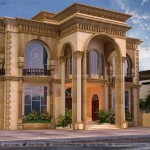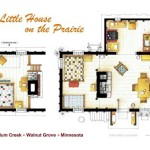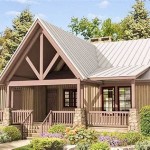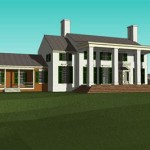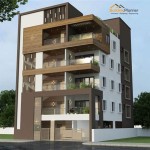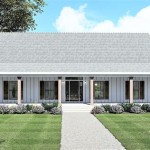Creating a comprehensive plan for a 1500 sq ft house with a basement and garage requires careful consideration of space utilization, functionality, and aesthetic appeal. Such a design aims to maximize living space while incorporating essential features that enhance comfort and practicality. This article provides a detailed overview of the key aspects involved in planning a house of this size, incorporating a basement and attached garage.
1500 Sq Ft House Plans With Basement And Garage
Designing a 1500 sq ft house presents a unique challenge: optimizing limited space to create a comfortable and functional living environment. Adding a basement and garage further complicates the design process but also offers significant advantages in terms of storage, parking, and potential additional living space. The design must seamlessly integrate these elements while adhering to local building codes and regulations.
The initial phase involves assessing the site characteristics, including the topography, soil conditions, and orientation. These factors will influence the placement of the house on the lot and the design of the basement and garage. For instance, a sloped lot may be ideal for a walk-out basement, while the orientation of the house should consider maximizing natural light and minimizing energy consumption.
Key Considerations for Space Planning
Effective space planning is crucial in a 1500 sq ft house. The layout needs to be carefully designed to ensure that all rooms are adequately sized and flow seamlessly into one another. This involves strategically allocating space for essential areas such as the living room, kitchen, bedrooms, and bathrooms, while also considering storage solutions and circulation paths.
Open-concept layouts are often favored in smaller homes to create a sense of spaciousness. Combining the living room, dining area, and kitchen into a single, open area allows for better natural light distribution and promotes social interaction. However, it is important to define distinct zones within the open space using furniture arrangement, flooring materials, or changes in ceiling height.
Bedrooms should be designed to maximize functionality and privacy. Incorporating built-in storage solutions, such as closets and shelving, can help to minimize clutter and optimize space. The location of bedrooms should be carefully considered to minimize noise transfer from other areas of the house.
Bathrooms should be designed for efficiency and comfort. Utilizing compact fixtures and smart storage solutions can help to maximize space in smaller bathrooms. Proper ventilation is essential to prevent moisture buildup and maintain air quality.
Integrating the Basement and Garage
The basement and garage are integral components of the overall house design. The basement can serve as a versatile space that can be used for a variety of purposes, such as a recreation room, home office, guest bedroom, or storage area. The garage provides secure parking for vehicles and can also be used for storage or as a workshop.
The design of the basement should consider factors such as moisture control, insulation, and natural light. Proper waterproofing and drainage are essential to prevent water damage and mold growth. Insulation helps to maintain a comfortable temperature in the basement, while the use of windows or light wells can bring in natural light and improve the ambiance.
The garage should be designed to accommodate the size of the vehicles and provide adequate storage space for tools, equipment, and other items. The placement of the garage door should be carefully considered to ensure easy access and maneuverability. The garage should also be properly ventilated to prevent the buildup of fumes and odors.
Connecting the basement and garage to the main living area requires careful planning. A direct access from the garage to the house can provide convenience and security. A staircase leading from the main floor to the basement should be located in a convenient and accessible location. The basement can also be accessed from an exterior door, providing independent access to the space.
Optimizing Functionality and Aesthetics
The design of a 1500 sq ft house with a basement and garage should focus on both functionality and aesthetics. The layout should be efficient and practical, while the overall design should be visually appealing and harmonious. This involves careful consideration of architectural style, materials, and finishes.
The architectural style of the house should complement the surrounding environment and reflect the homeowner's personal preferences. Popular architectural styles for smaller homes include Craftsman, Ranch, and Modern. The choice of materials should consider durability, cost, and aesthetic appeal. Common materials for exterior cladding include brick, siding, and stone.
The interior design should create a cohesive and inviting atmosphere. The choice of colors, textures, and lighting can significantly impact the overall feel of the house. Neutral colors are often favored for walls and ceilings to create a sense of spaciousness and allow for flexibility in decorating. Accent colors can be used to add visual interest and create focal points.
Lighting plays a crucial role in creating a comfortable and functional living environment. Natural light should be maximized through the use of large windows and skylights. Artificial lighting should be strategically placed to provide adequate illumination for various tasks and activities. A combination of ambient, task, and accent lighting can create a well-lit and visually appealing space.
Landscaping can enhance the curb appeal of the house and create a welcoming outdoor space. The design should consider the size and shape of the lot, the climate, and the homeowner's preferences. Trees, shrubs, and flowers can be used to create a visually appealing and low-maintenance landscape. A well-designed landscape can also provide shade, privacy, and wind protection.
Smart home technologies can be integrated into the design to enhance convenience, security, and energy efficiency. Smart thermostats, lighting controls, and security systems can be controlled remotely and can help to reduce energy consumption and improve home security. Voice-activated assistants can be used to control various aspects of the home, such as lighting, temperature, and entertainment systems.
Accessibility considerations should be incorporated into the design to ensure that the house is accessible to people of all ages and abilities. This may involve incorporating features such as ramped entrances, wider doorways, and grab bars in bathrooms. Universal design principles can be applied to create a home that is both functional and aesthetically pleasing for everyone.
Building a 1500 sq ft house with a basement and garage requires careful planning and attention to detail. By considering the key aspects outlined in this article, homeowners can create a comfortable, functional, and aesthetically pleasing living environment that meets their specific needs and preferences. Engaging with architects, designers, and builders who specialize in smaller homes can provide valuable insights and guidance throughout the design and construction process.

1500 Sq Ft House Plans With Basement

1500 Sq Ft Ranch House Plans With Basement Denesch Homes 1400 Home Rtm And Onsite New Best

Our Picks 1 500 Sq Ft Craftsman House Plans Houseplans Blog Com

House Plan 92395 Ranch Style With 1500 Sq Ft 2 Bed Bath 1
Our Picks 1 500 Sq Ft Craftsman House Plans Houseplans Blog Com

House Plan Information For E1046 10 1500 Sq Ft I Would Change The Basement Layout Don T Need A 5 Bedroom New Plans Dream Tiny

House Plan 74275 Mediterranean Style With 1500 Sq Ft 3 Bed 2

House Plans Under 1500 Square Feet

Our Picks 1 500 Sq Ft Craftsman House Plans Houseplans Blog Com

Our Picks 1 500 Sq Ft Craftsman House Plans Houseplans Blog Com

